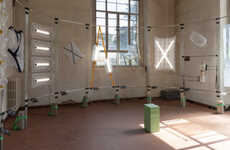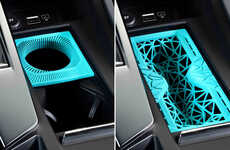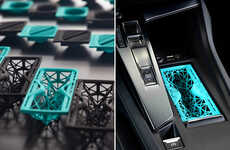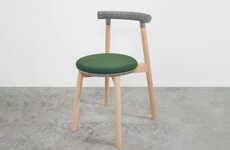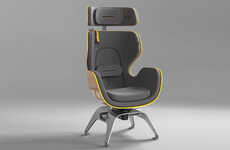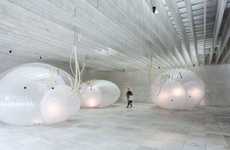
MIT's Groundbreaking Product Might Be a Game-Changer for Vehicles
The Self-Assembly Lab at MIT worked with BMW on the development of functional 3D-printed inflatable structures that can revolutionize the interiors of cars. The auto manufacturer was interested in developing innovative and responsive fabrics that would prove to be a good fit for its futuristic automobile concepts. The collaboration produced prototypes of inflatable structures that are made out of silicone and are stretchy. The product is able to respond to changes in air pressure and, if utilized as a seat, can "morph into different configurations with the flick of a switch." The use of the 3D-printed inflatable structure is still up for debate. The innovative material can also be integrated into the car's dashboard, for example.
The high response rates and the adaptability of MIT x BMW's prototype will allow for a feature that will seamlessly integrate within future autonomous cars.
The high response rates and the adaptability of MIT x BMW's prototype will allow for a feature that will seamlessly integrate within future autonomous cars.
Trend Themes
1. Functional 3d-printed Inflatable Structures - The development of functional 3D-printed inflatable structures opens up opportunities to revolutionize various industries, such as automotive, furniture, and architecture.
2. Responsive Fabrics - The collaboration between MIT and BMW in developing responsive fabrics creates disruptive innovation opportunities in the automotive, fashion, and sports industries.
3. Adaptive Interiors - The use of 3D-printed inflatable structures in interiors allows for adaptive configurations, offering potential innovation opportunities in transportation, hospitality, and event industries.
Industry Implications
1. Automotive Industry - The automotive industry can explore the integration of 3D-printed inflatable structures in vehicle interiors to enhance comfort and flexibility.
2. Furniture Industry - The furniture industry can leverage functional 3D-printed inflatable structures to create dynamic and customizable seating solutions.
3. Architecture Industry - The architecture industry can utilize 3D-printed inflatable structures to design flexible and responsive structures that adapt to various environmental conditions.
2.7
Score
Popularity
Activity
Freshness

